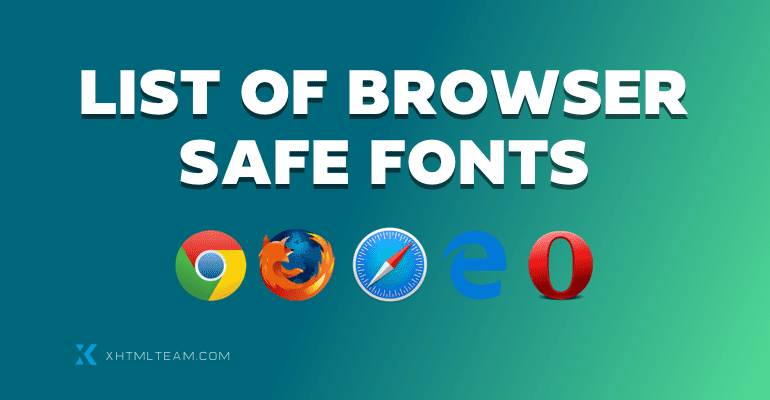When converting a PSD design to HTML, choosing the right fonts is essential for maintaining consistency across different browsers and devices. While web fonts like Google Fonts are widely used, browser-safe fonts ensure that text appears correctly without requiring additional downloads. In this article, we will explore browser-safe fonts and their importance in PSD to HTML conversion.
What Are Browser Safe Fonts?
Browser-safe fonts are fonts that are pre-installed on most operating systems, ensuring consistent display across different browsers and devices. These fonts eliminate the risk of rendering issues, missing fonts, or fallback inconsistencies.
Why Use Browser Safe Fonts in PSD to HTML Conversion?
- Cross-Browser Compatibility: Ensures the text looks the same in all browsers.
- Faster Loading Times: No need to load external font files.
- Consistent User Experience: Prevents unexpected font substitutions.
- Better Performance: Reduces website load time and improves SEO rankings.
Commonly Used Browser Safe Fonts
Below is a list of the most commonly used browser-safe fonts categorized by their font families:
| Normal style |
|---|
| Arial, Arial, Helvetica, sans-serif |
| Arial Black, Arial Black, Gadget, sans-serif |
| Comic Sans MS, Comic Sans MS5, cursive |
| Courier New, Courier New, monospace |
| Georgia1, Georgia, serif |
| Impact, Impact5, Charcoal6, sans-serif |
| Lucida Console, Monaco5, monospace |
| Lucida Sans Unicode, Lucida Grande, sans-serif |
| Palatino Linotype, Book Antiqua3, Palatino, serif |
| Tahoma, Geneva, sans-serif |
| Times New Roman, Times New Roman, Times, serif |
| Trebuchet MS1, Trebuchet MS, sans-serif |
| Verdana, Verdana, Geneva, sans-serif |
| Symbol, Symbol (Symbol2, Symbol2) |
| Webdings, Webdings (Webdings2, Webdings2) |
| Wingdings, Zapf Dingbats (Wingdings2, Zapf Dingbats2) |
| MS Sans Serif4, Geneva, sans-serif |
| MS Serif4, New York6, serif |
How to Implement Browser Safe Fonts in HTML & CSS
Using browser-safe fonts is simple with CSS. Below is an example of how to apply them:
body {
font-family: Arial, Helvetica, sans-serif;
}
h1, h2, h3 {
font-family: Georgia, 'Times New Roman', serif;
}
code, pre {
font-family: 'Courier New', Courier, monospace;
}
Using Font Stacks
A font stack provides alternative fonts in case the primary font is unavailable:
p {
font-family: 'Trebuchet MS', Verdana, sans-serif;
}
This ensures that if one font is missing, a similar one is used instead.
When to Use Web Fonts Instead of Browser Safe Fonts
While browser-safe fonts ensure consistency, there are situations where using web fonts (e.g., Google Fonts) may be preferable:
- When branding requires a unique or custom font
- When designing for modern, high-quality typography
- When the website has a strong design focus requiring a specific typeface
Example of Google Font Implementation
<link href="https://fonts.googleapis.com/css2?family=Roboto:wght@400;700&display=swap" rel="stylesheet">
body {
font-family: 'Roboto', sans-serif;
}
Conclusion
When converting PSD to HTML, choosing browser-safe fonts ensures compatibility, performance, and a consistent user experience. While web fonts provide design flexibility, browser-safe fonts remain a reliable option for seamless cross-browser display. By using the right font stacks, developers can balance aesthetics and functionality effectively.

